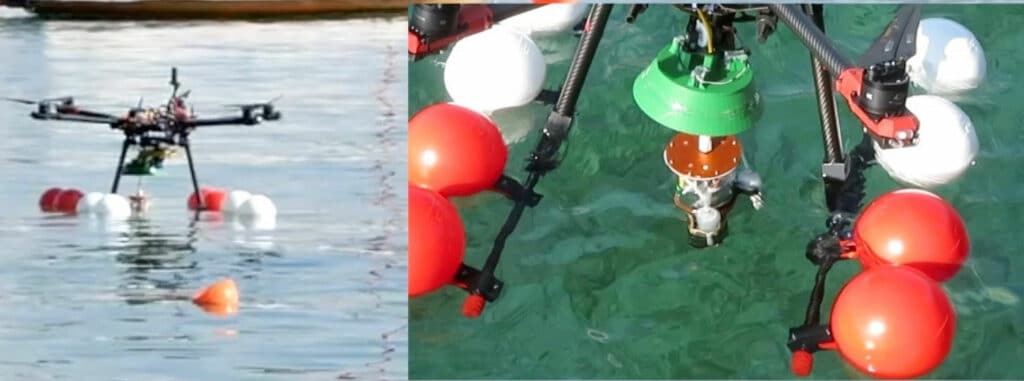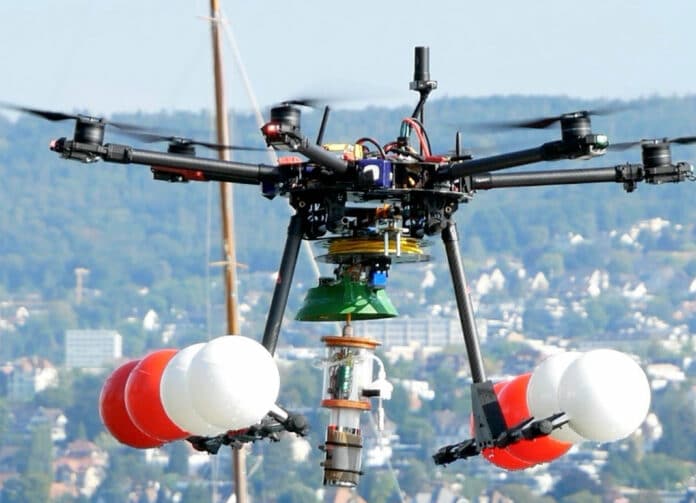Researchers at Imperial College London have developed a new dual drone that can both fly through air and land on water to collect samples and monitor water quality. The researchers developed a drone to make monitoring drones faster and more versatile in aquatic environments.
The ‘dual robot’ drone, tested at Empa and the aquatic research institute Eawag in Switzerland, has successfully measured water in lakes for signs of microorganisms and algal blooms, which can pose hazards to human health, and could in the future be used to monitor climate clues like temperature changes in Arctic seas.
The unique design, called Multi-Environment Dual robot for Underwater Sample Acquisition (MEDUSA), could also facilitate monitoring and maintenance of offshore infrastructure such as subsea pipelines and floating wind turbines.

The MEDUSA drone lies with remotely controlled multirotor – lift-generating blades that rotate around a central vertical mast like helicopter blades. This allows MEDUSA to travel long distances, fly over obstacles, carry high payloads, and maneuver through difficult terrain. After touching down on the water surface, MEDUSA decouples its tethered mobile underwater pod with a camera and sensors, which can sink to depths of up to ten meters.
The exact depth and three-dimensional position of the pod can be controlled remotely by the drone operator using buoyancy control and jets, guided by real-time video and sensor feedback from the pod.
After sampling, the drone coils the tether to reunite with the pod before taking off and flying back to the user. While the underwater pod design is new, the aerial drone is an industry-standard, so MEDUSA systems are rather easy to design and combine with industrial drones.
Ecologists typically use boats to reach and monitor aquatic areas, but MEDUSA could help reduce the risk to humans of traveling to difficult-to-reach aquatic environments. This could be particularly useful in the Arctic Ocean, where changes in ocean temperatures, acidity, salinity, and currents can offer critical clues about the global climate crisis.
“MEDUSA is unique in its dual robotic design, with a flight component that allows it to access hard-to-reach areas and a dive component that monitors water quality,” explains Mirko Kovac, director of the Aerial Robotics Lab at Imperial College and head of the Robotics Center at Empa. “Our drone greatly simplifies robotic underwater monitoring by performing sophisticated tasks that would otherwise require boats or submarines.”
